When you mention the word doughnut, most people imagine a round piece of cooked dough drenched in glaze and topped with sprinkles. Or perhaps they think of a golden ball stuffed with jam and dusted with icing sugar. But there’s a whole world of doughnuts beyond the ring we know and love.
In Japan, mochi doughnuts blend two dessert concepts together, while Korean iterations showcase savoury flavours. In a more local setting, chefs are creating sourdough variations that cater to a realm of dietary requirements.
Hospitality talks to Demochi Donut’s Dennis Chan, Soul Deli’s Daero Lee and Comeco Foods’ Yu Orzone about their doughnut offerings and cover everything from sourcing specialty ingredients to catering to a broader market.
Mochi
Dennis Chan became acquainted with mochi doughnuts during a trip to Japan. His fascination with the concept inspired him to return to Sydney and open Demochi Donut in Banksia in 2019.
“We visited a very famous Japanese franchise bakery which specialises in mochi doughnuts,” says Chan. “It’s called Mister Donut and it’s been around for maybe 15 years. They’re a huge corporation [and] the Japanese version of Donut King or Krispy Kreme. It kind of triggered my curiosity to figure out what it is and what makes it different.”

While the concept is in the embryonic stages in Australia, mocha doughnuts have a long history in their home country. “It’s actually a very old trend in Japan,” says Chan.
Chan describes mochi doughnuts as having “the perfect chew with a light crisp”. He has been perfecting the recipe over the past six years and it all starts with the dough. “It’s about the ratios,” says Chan. “Our secret would be how much flour and how much wet mixture you put in to create the product.”
The dry flour mixture is where mochi and dough intersect and sees regular flour combined with glutinous rice flour. “The point of difference is your glutinous rice; it gives it that slight mochi chew,” says Chan. “But you still need flour in the dough to help with the process.”
Glutinous rice is a key ingredient in mochi, and while a mochi doughnut is not as gummy or gooey, it provides a satisfying bite and chew. Part of the appeal of the doughnuts also comes by way of its beaded appearance, which sees eight small balls of dough linked together. “It has that shape to increase surface area,” says Chan. “It’s also interactive; you can split the balls into individual circles and some people eat them one at a time.”
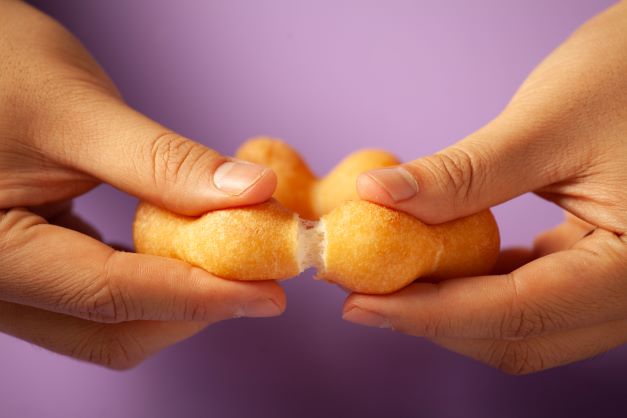
Demochi switch up their offering every week, with Chan delivering the doughnuts by the dozen and in packs of four. “We’ve been producing more and more flavours,” he says. “We started off with our original honey glaze and then we went into traditional classic cinnamon.”
While the glazed and cinnamon-sugared doughnuts are crowd pleasers, Demochi also heroes ingredient found in Asian desserts. “We started experimenting with a lot of Asian flavours because our brand is Asian-based,” says Chan. “We pay homage to black sesame, milk tea, pandan and yuzu.”
Goroke and kkwabaegi
If you were to order doughnuts in Korea, it would probably be from a market stall. At Soul Deli in Sydney’s Surry Hills, Executive Chef Daero Lee set out to recreate this exact experience. Lee started with a sweet doughnut named after its braided appearance. “Kkwabaegi means twisted,” he says.
The chef makes two types of kkwabaegi; one with sugar and sesame seeds and another glazed in a rice syrup called ssal-jocheong. “I mix it with some corn syrup at the same time because if I only use rice syrup, it’s too sticky; I want it to be a little bit lighter,” says Lee.
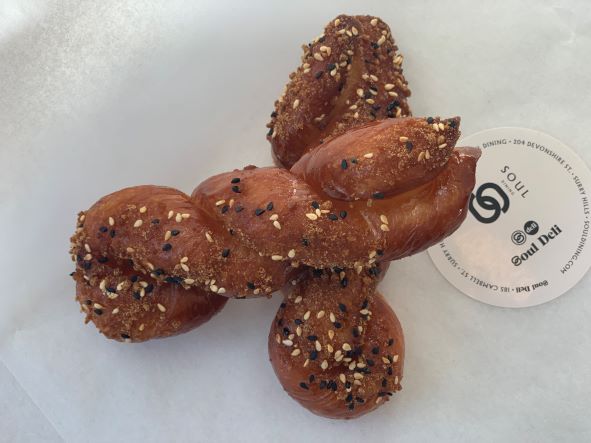
Soul Deli have also created a deep-fried croquette-style doughnut called goroke. “The croquette was introduced by the Portuguese and the French to Japan and it became goroke,” says Lee. “They used potato mash and covered it with panko crumbs. Then it [came] to Korea and it has the same name, but we make it more in a dumpling shape.”
Lee has dabbled in two kinds of savoury croquettes that cover traditional and contemporary fillings. “I make the potato mash with cooked onions, carrots, corn and ham,” he says. “We add curry powder because curry gives extra flavour when people open it up. The second one we make with house-made kimchi and pork mince. I add mozzarella cheese and a little bit of mashed potato and we fold it all together; it’s kind of like a spicy version with kimchi cheese.”
A sweet goroke sees soboro and white sweet potato mash mixed with Australian honey. In this instance, Lee trades out panko for a homemade cookie crumble.
“Its specialty is the crust,” he says. “I make a sandy kind of cookie dough and then I stuff and deep fry the doughnut. It has a nice crust on the outside with a supple sweet potato paste inside.”
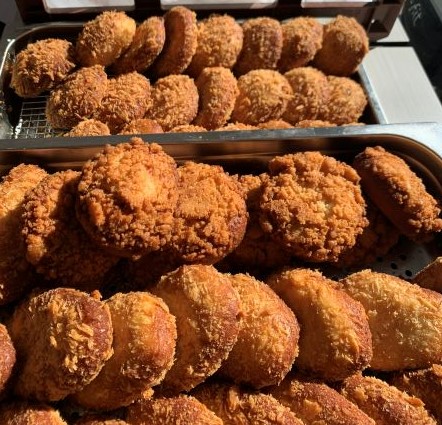
When it comes to the dough, Lee keeps it simple with flour, water, milk for kkwabaegi, sugar and salt. The chef opts for plain, all-purpose flour with less gluten, but baker’s flour is recommended for optimum results. In the end, the dough’s elasticity has got to be right.
“It’s quite a long process to make the dough,” says Lee. “It has to be soft and have stretch because you put a lot of stuffing inside. If it’s not stretchy enough, you can’t make the shape.”
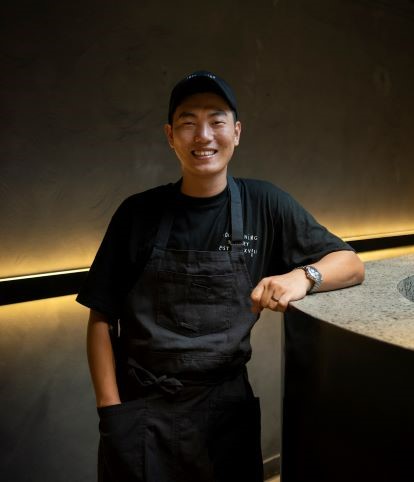
Lee mixes the dough for at least 15 minutes to achieve a stretchy consistency before proving. “I use my combi oven to steam the dough at 35 degrees Celsius and it doubles in size,” he says. “I take 50g portions, leave them for 15 to 18 minutes, put the stuffing inside and prove them again at the same temperature. Then I deep fry the doughnuts at 170 degrees Celsius until they’re the right colour.”
Korean doughnuts echo similarities of typical American-style options, but there are key distinctions. “It’s similar, but it’s quite different at the same time,” says Lee. “[For regular doughnuts], it’s about the glaze and the toppings, but for Korean doughnuts, it’s what’s on the inside.”
Sourdough
At Comeco Foods in Sydney’s Newtown, Owner Yu Orzone created a sourdough doughnut to cater to customers with dietary requirements. “The reason why we started developing sourdough doughnuts was because our friend’s son has a few allergies,” says Orzone. “He has gluten, dairy, egg, nuts and seed allergies, so I thought, ‘Let’s make something he can eat with everyone’.”
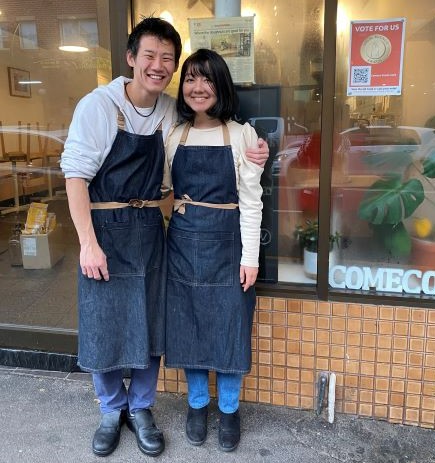
Rice flour is the key ingredient used Comeco’s gluten-free doughnuts, with the team making the flour in-house using an imported grinder from Japan. A combination of white and brown rice is used. Organic brown rice is also the base of the venue’s four-year-old starter. “If the starter is too young, the flavours are too strong,” says Orzone. “At this stage, the starter is working in its best condition.”
The ‘sourdoughnuts’ are also made differently to your standard yeast option. Instead of undergoing a proving process, the dough is fermented for 72 hours before it’s fried in rice bran oil. “We use it because it has a high smoke point,” says Orzone. “We fry them at 180 degrees Celsius until they’re golden brown and crispy on the outside.”
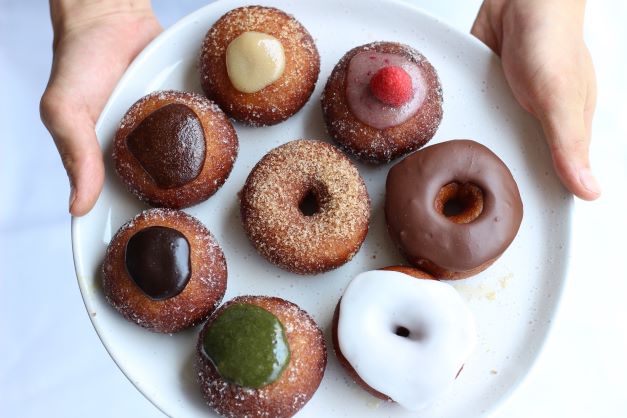
Creations that forgo dairy and gluten have gained a bad rap in the past, but ingredient innovations have gone a long way to ensuring chefs can produce end products that are inclusive to those with allergies or intolerances and taste just as good as the norm.
“People are surprised when they have our doughnuts because the texture is similar to normal fried doughnuts,” says Orzone. “We have customers that don’t have any food restrictions who enjoy the unique flavour of sourdough doughnuts.”
Sponsored Content

The future of reusables in the hospitality industry
Sponsored by Huskee

The premium deep frying oil trusted by William Angliss
Sponsored by Peerless
Trending Now
Resources
Lorem ipsum dolor sit amet, consectetur adipiscing elit. Fusce ac ornare lectus. Sed bibendum lobortis...
Lorem ipsum dolor sit amet, consectetur adipiscing elit. Fusce ac ornare lectus. Sed bibendum lobortis...
Sign up for our newsletter
